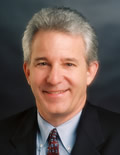All Aboard For East Ventura
The other day, I boarded Metrolink Train 119 to return home from Downtown Los Angeles. The train was bound for a place called “East Ventura”.
Ever since Metrolink first came to Ventura a decade ago, the trains have stopped at a station in the Montalvo neighborhood, off of Victoria Avenue just north of Highway 101. This isn’t necessarily the best location in town for a Metrolink station. though it is an easy drive for 50,000 residents who live east of Victoria. But the truth of the matter is that the Montalvo rail siding was where the trains were stored overnight after they finished their run in Oxnard. So it made sense to take place where they were stored and turn it into a formal station. It’s also the starting point for a possible rail line through Santa Paula and Fillmore all the way to Santa Clarita.
The station has always been called “Montalvo”. Montalvo is a venerated neighborhood in Ventura; some of it is inside the Ventura city limits and some is not. I’ve spent a lot of time in Montalvo over the years. I’ve thrown out the first pitch in the Montalvo Little League two years in a row, and I’ve had lots of friends who live in Ventura and/or teach at Montalvo Elementary School.
So, while Montalvo is a very important neighborhood, the name really doesn’t convey a true sense of where the Ventura County Metrolink line goes. When you’re standing at Union Station in Downtown L.A. looking at the board, you see the names of the bigger cities that define Southern California: Riverside, San Bernardino, Anaheim, Santa Ana, Burbank, Glendale, Santa Clarita, Oxnard. You can take an Amtrak train to Ventura (the stop is at the Fairgrounds) but traditionally there was no way to decipher that if you got on the Montalvo train you were going anywhere near Ventura. Unless you knew where Montalvo was.
A couple of months ago, in my capacity as Chair of the Ventura County Transportation Commission, I asked Metrolink to change the name of the station from “Montalvo” to “East Ventura”. That way, riders in Downtown L.A. know that they’re going to Ventura – but they also know they are not going to the “Ventura” stop on Amtrak, which of course is in a different location. Metrolink made this earlier this month. Right now, to avoid confusion, the boards at Union Station say: “East Ventura/Montalvo”.
Things still aren’t perfect, of course. Ventura is still the only City in the entire Metrolink system – 130 stops – where Amtrak and Metrolink stop in different places. I’d love to see Metrolink come downtown to the Fairgrounds, but there are quite a number of logistical difficulties. For one thing, the East Ventura stop is essentially on different rail line, so Metrolink can’t just start at the Fairgrounds, stop at East Ventura, and move on to Oxnard. In addition, the rail line is single track throughout Ventura, meaning Metrolink would have to get to the Fairgrounds and back without running into conflicts with Amtrak or freight trains run by Union Pacific (which owns the tracks).
Still, I’m hopeful. The City is just starting on a new phase of our study looking at the possibility of capping the 101 Freeway at California (the study is being paid for by the Southern California Association of Governments). We’re hopeful that if the freeway were ever capped, we could create double-tracking or a siding that would form the basis for a multi-modal transit center, where trains and buses come together in one location.
For now, I’ll take whatever small victories I can get. And taking the train to East Ventura is definitely a win.
